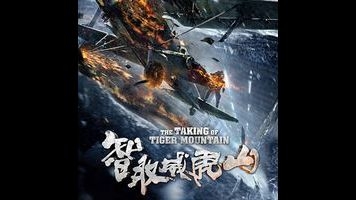Tsui Hark transforms a Maoist chestnut into The Taking Of Tiger Mountain 3D

Tsui Hark—the defining plastic stylist of the Hong Kong blockbuster—has a thing for playing fast and loose with cultural myth. While contemporaries like John Woo and Johnnie To are hung up on genre archetypes and Euro-American film references, Tsui, who produced Woo’s and To’s early creative breakthroughs, specializes in riffing on Chinese history and Hong Kong cinema—the classics, so to speak. He’s remade The One-Armed Swordsman and Dragon Gate Inn (as The Blade and The Flying Swords Of Dragon Gate, respectively) and put his spin on everything from the end of the Qing Dynasty to the knock-off jeans trade. With the Hong Kong film industry now slowly—and regrettably—merging with the mainland, it seems inevitable that Tsui would try his hand at one of the cornerstones of the Cultural Revolution. Hence, The Taking Of Tiger Mountain 3D.
Taking Tiger Mountain By Strategy is perhaps the best-known of the so-called model works, a small set of operas and ballets handpicked by Madame Mao, Jiang Qing, to inspire a new Chinese popular culture. (It didn’t work.) For all of its sloganeering, it’s essentially a genre piece, in which a dyed-in-the-wool Communist goes undercover as a bandit in order to help his comrades breach the titular stronghold. Tsui’s take on Tiger Mountain reimagines this story as an over-the-top bullet-time action extravaganza—an idea that’s sort of ingenious, since it allows the movie to preserve the original’s stylized characterizations, with the slow-mo shots serving as an analogue to the opera’s staged asides. At the same time, it also attempts to emphasize Tiger Mountain’s enduring legacy as a cultural touchstone—something that can’t help but feel disingenuous, reverence never being Tsui’s strong suit.
Tiger Mountain 3D opens in present-day New York City, of all places, with a group of young expats gathering for a little Christmastime karaoke in Chinatown. A number from the 1970 film version of Tiger Mountain is queued up by mistake, leading one of the partygoers to look it up on his phone later that evening, when he finds himself stuck in a gridlocked cab. Cue booming martial music, and the opening credits rolling in over an aerial view of snow-capped trees.
Tiger Mountain 3D is structured around a slide into unreality, beginning in 2015 and proceeding from there into a version of 1946 that grows less and less realistic as the movie goes on, starting with a band of starving, frost-bitten PLA soldiers and ending with a go-for-broke, explosion-packed climax distinguished by the kind of gummy, gelatinous CGI that can come across as compellingly imaginative without being remotely convincing. (Besides providing some half-hearted sentimentality, the modern-day framing device serves as a reference point to the movie’s increasing cartooniness.)
Every new character seems less real than the last; PLA leader 203 (Lin Gengxin) might be a paragon of virtuous Communist derring-do, but he seems positively flesh-and-blood when compared to protagonist Yang (Zhang Hanyu), who arrives at 203’s camp wearing eye shadow and a very operatic foot-long beard. A viewer can’t help but presume that the reason Tiger Mountain 3D withholds showing big bad Lord Hawk (Tony Leung Ka Fai) until an hour in is because that’s how long it takes for the movie’s texture to become properly saturated with cartoonishness. By the time Hawk arrives, Yang has already fought a giant CGI tiger, found his way into a fortress that looks like it was built by orcs, and encountered assorted tattooed, disfigured post-apocalyptic-type bandits. The villain’s appearance—he’s a hunchback with a beaked nose and a spiked power doughnut—would seem outrageous in the movie’s early scenes, but halfway in, it barely registers as unusual.
Though nowhere near as energetic as Detective Dee And The Mystery Of The Phantom Flame or Young Detective Dee: Rise Of The Sea Dragon—Tsui’s recent live-action cartoon takes on the gong’an, a genre of mystery fiction that significantly predates the Western detective novel—Tiger Mountain 3D nonetheless boasts a handful of colorful, gonzo set pieces of the kind that made Tsui’s reputation at home and abroad. Its slow-going opening stretch and assorted mawkish subplots might just be the price a viewer has to pay for the sight of Yang and Hawk slugging it out in a biplane as it careens down a seemingly endless escape tunnel—a sequence that makes the climax of Fast & Furious 6 look like a model of realism and restraint.